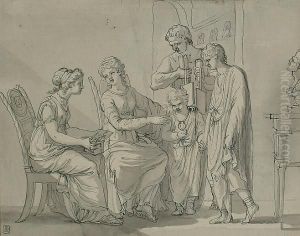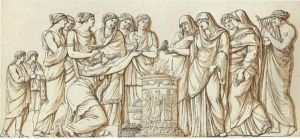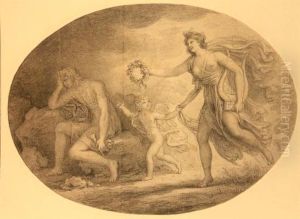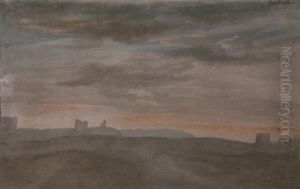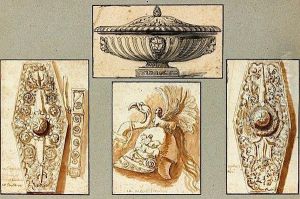Esprit Antoine Gibelin Paintings
Esprit Antoine Gibelin was a French artist and illustrator, born in 1739 in Aix-en-Provence, France. He was a notable figure in the French art world during the late 18th century, contributing significantly to the realms of drawing, painting, and engraving. Gibelin's career flourished in an era marked by the Enlightenment, a period that emphasized reason, science, and a questioning of traditional structures, including those in the arts.
Gibelin received his initial art education in his hometown but soon moved to Paris to further his studies and career. In Paris, he became a pupil of the distinguished painter Joseph-Marie Vien, who was a proponent of the Neoclassical style, which sought to return to the simplicity and purity of the arts of ancient Greece and Rome. Under Vien's guidance, Gibelin honed his skills and embraced the Neoclassical movement, which was gaining momentum against the Rococo style, then seen as overly ornate and superficial.
Throughout his career, Gibelin was deeply involved in the intellectual and artistic life of Paris, contributing to various projects and publications. He was particularly known for his work as an illustrator, where his engravings and drawings graced the pages of books and scientific works, bringing to life the texts with clarity and elegance. His works not only reflected the aesthetic shifts of his time but also the growing interest in empirical observation and scientific inquiry.
Despite his contributions to the arts and the Enlightenment's intellectual landscape, Gibelin's name is not as widely recognized today as some of his contemporaries. This relative obscurity may be attributed to the turbulent political climate of France during his lifetime, including the French Revolution and the Napoleonic Wars, which overshadowed many cultural achievements of the era. Nevertheless, Gibelin's work remains a testament to the rich artistic and intellectual currents of late 18th-century France.
Esprit Antoine Gibelin passed away in 1813, leaving behind a legacy that, while not as celebrated as some of his peers, contributed significantly to the development of Neoclassical art and the visual culture of his time. His engravings and drawings continue to be studied by art historians and enthusiasts for their elegance, precision, and the way they encapsulate the ideals of the Enlightenment.
